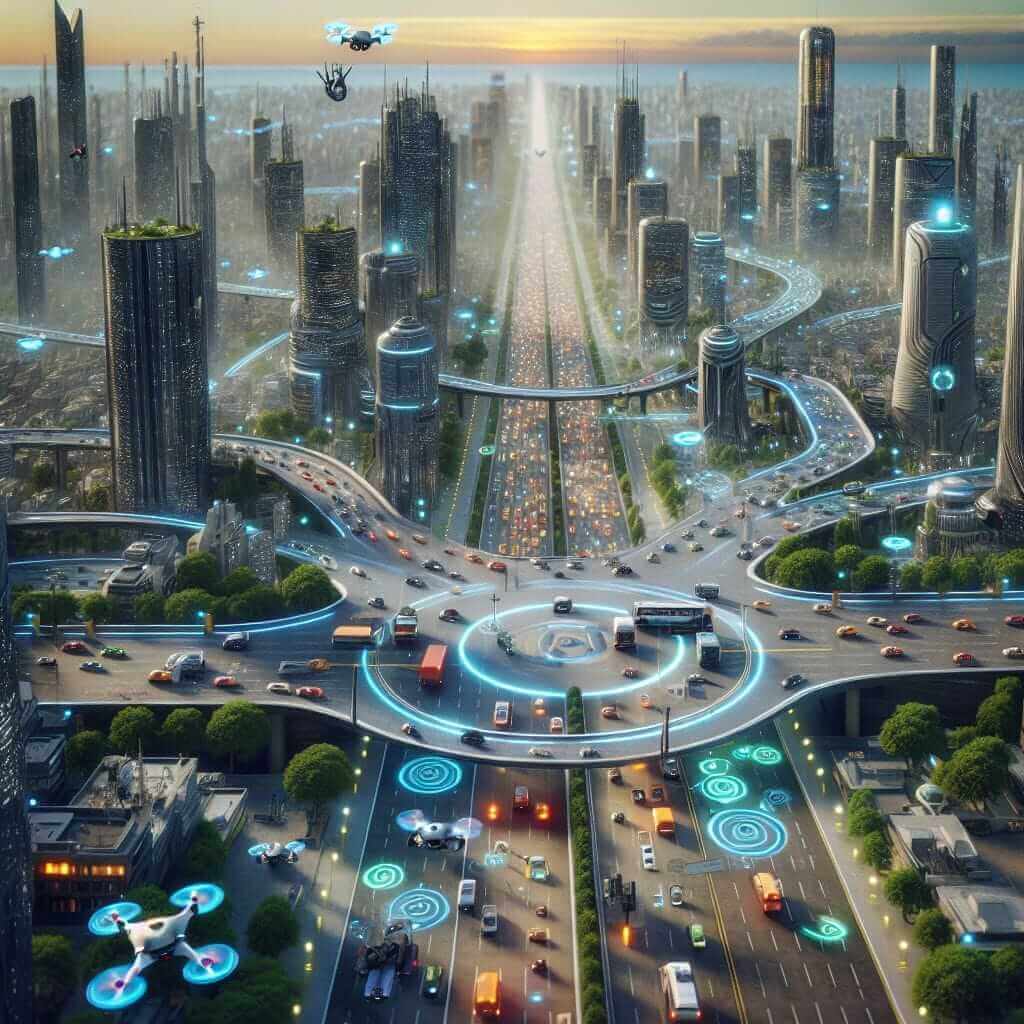The IELTS Reading section demands a critical grasp of varied topics, often requiring candidates to understand detailed passages and respond accurately to several question types. Topics in the realm of technology and urban development have gained prominence due to their relevance, making “How is AI being used to improve urban planning?” a pivotal subject area likely to recur. This article aims to provide a comprehensive reading exercise on this relevant topic, along with detailed answers and insights to help you score high in your IELTS Reading section.
IELTS Reading Exercise
Urban planning has always been a challenging task requiring a delicate balance of ecological, societal, and economic factors. With the advent of Artificial Intelligence (AI), a significant transformation is underway, optimizing urban planning processes and creating sustainable, smart cities. This exercise starts with a passage in the IELTS format followed by a series of questions and comprehensive answers.
Reading Passage
AI and Urban Planning
Artificial Intelligence (AI) has revolutionized numerous sectors, and urban planning is no exception. AI’s capability to analyze vast datasets and predict future trends makes it an invaluable tool for urban planners aiming to create more efficient, sustainable cities. This technology not only addresses current urban challenges but also anticipates future needs, ensuring long-term growth and adaptability.
One of the key areas where AI is making a significant impact is in traffic management. Through the use of predictive analytics, AI systems can optimize traffic flow, reduce congestion, and enhance public transportation systems. For instance, AI algorithms analyze real-time traffic data to tweak traffic signal patterns and mitigate traffic jams. These predictive models also help urban planners foresee and alleviate potential traffic issues arising from new infrastructure projects.

In addition to traffic management, AI plays a crucial role in environmental planning. Cities worldwide are grappling with pollution and energy consumption issues. AI-driven models can monitor air quality and energy usage, providing insights that guide policy-making and urban development strategies. By predicting pollution levels and identifying sources, AI can help in devising effective pollution control measures and promoting renewable energy integration. Furthermore, AI’s ability to model and simulate environmental impacts aids in creating eco-friendly urban landscapes.
AI is also transforming the way cities tackle housing and infrastructure development. Using machine learning algorithms, urban planners can analyze demographic data to predict housing demands and optimize land use. This tailored approach ensures efficient resource allocation, reducing wastage and fostering sustainable development.
Despite these advancements, integrating AI in urban planning is not without challenges. Data privacy concerns, high implementation costs, and the need for extensive training are substantial barriers. Nonetheless, the benefits of AI in creating smarter, sustainable cities underscore its invaluable potential in shaping the future of urban living.
Questions
1. Multiple Choice
1.1 What is one of the primary benefits of using AI in urban planning?
- Reducing the cost of infrastructure projects.
- Enhancing the efficiency of traffic management.
- Eliminating the need for human urban planners.
- Promoting private transportation systems.
1.2 How does AI contribute to environmental planning?
- By increasing energy consumption.
- Through the development of new housing projects.
- By monitoring and predicting air quality.
- Enhancing privacy measures.
2. Identifying Information (True/False/Not Given)
2.1 AI systems can only improve traffic management during peak hours.
2.2 Environmental impacts can be simulated using AI technology.
2.3 Implementation of AI in urban planning is cost-effective.
3. Matching Sentences
3.1 AI-driven models can (a) monitor air quality.
3.2 Urban planners use machine learning algorithms to (b) optimize land use.
3.3 AI systems adjust traffic signal patterns to ____ (c) reduce congestion.
4. Sentence Completion
4.1 Urban planners use predictive analytics to __.
4.2 AI’s ability to model environmental impacts helps in creating __ urban landscapes.
Answers and Explanations
Multiple Choice
1.1 Correct answer: 2. AI significantly enhances the efficiency of traffic management, optimizing traffic flow and reducing congestion.
1.2 Correct answer: 3. AI contributes to environmental planning by monitoring and predicting air quality, guiding urban development strategies.
Identifying Information
2.1 False. AI systems optimize traffic management at all times, not limited to peak hours.
2.2 True. AI can model and simulate environmental impacts, aiding eco-friendly urban planning.
2.3 Not Given. The passage does not explicitly state whether AI implementation in urban planning is cost-effective or not.
Matching Sentences
3.1 AI-driven models can (a) monitor air quality.
3.2 Urban planners use machine learning algorithms to (b) optimize land use.
3.3 AI systems adjust traffic signal patterns to ____(c) reduce congestion.
Sentence Completion
4.1 Urban planners use predictive analytics to optimize traffic flow and reduce congestion.
4.2 AI’s ability to model environmental impacts helps in creating eco-friendly urban landscapes.
Common Mistakes and Tips
- Overlooking context: Ensure you read the entire passage and understand the context before answering.
- Misinterpreting questions: Pay attention to details in the questions, especially True/False/Not Given and Identifying Information formats.
- Time management: Practice within timed conditions to improve speed without sacrificing accuracy.
Vocabulary and Grammar
Key Vocabulary
- Predictive analytics (noun): Predict future trends using current and historical data.
- Congestion (noun): Overcrowding; obstruction in traffic flow.
- Eco-friendly (adjective): Not harmful to the environment.
- Mitigate (verb): Make less severe or serious.
Grammar Focus
- Conditional Sentences: “If AI algorithms analyze real-time data, they can optimize traffic signal patterns.”
- Complex Sentences: “AI’s ability to model and simulate environmental impacts aids in creating eco-friendly urban landscapes.”
Conclusion
This reading exercise on “How is AI being used to improve urban planning?” offers a realistic IELTS practice opportunity. Immerse yourself in topics of current relevance, practice various question types, and refine your comprehension skills. For further reading, explore related articles on achieving sustainable urban planning and renewable energy integration into urban planning to expand your knowledge and boost preparation.